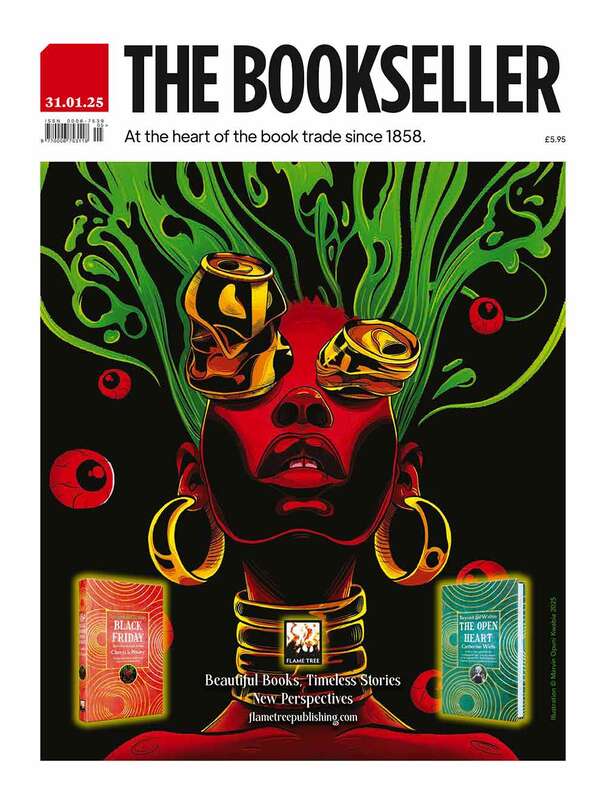You are viewing your 1 free article this month. Login to read more articles.
Authors protest as children's books account for 7% of Christmas newspaper coverage
Authors and critics have called for newspapers to increase the space they allow for children’s book reviews after only 7% of the titles chosen for newspapers’ books of the year round-ups were for kids.
According to data collated from The Bookseller’s Books in the Media for reviews published up until 10th December, only 7% of the books of the year were children’s titles, a figure that is higher than the weekly average of 3% calculated last year by author SF Said, who runs the #CoverKidsBooks campaign, but does not reflect the fact that children’s books account for 25% of the market.
Said said: “It's frustrating to everyone in the world of children's books to see our field being given tiny amounts of coverage throughout the year, if not ignored altogether. But this is a time of year when huge numbers of adults are looking for presents to give children, so if anything, children's books should be over-represented in books of the year lists, receiving even more than adult coverage.”
Poetry and non-fiction are often ignored, which is “heartbreaking”, but there “simply isn't enough space to cover them when you're only giving the entire field of children's literature a few lines”, he added.
Author MG Leonard said newspapers are not reflecting the “richness” of the books available to children and “this is why we hear cries of ‘There are no books for... or about...’ There are books for everyone and about everything, but how would anyone know?” She also lamented the fact reviewers pick their highlights because there is no space for critical analysis.
Children's writer Piers Torday agreed, saying: “It feels a dereliction of critical duty that bestselling books by David Walliams and David Baddiel (to name but two) have received virtually no scrutiny whatsoever, and equally disappointing that only a fraction of the increasingly diverse, innovative, high quality texts for the next generation get any kind of representative attention in the mass media consumed by the parents, relatives, teachers and librarians who buy the books.”
He complained about the Evening Standard choosing three out of ten books by dead authors, including Edith Nesbit. “Whilst she was a truly great writer and one we should never cease to introduce children too, she is not exactly a representative author of the year in 2018,” he said.
Critic and writer Amanda Craig, praised her publication, the New Statesman, for giving her 1,000 words to review children’s books this Christmas but said she still has to leave out good books, so did not include any YA titles at all.
“It meant that I couldn’t include, say, Ellen Renner's Storm Witch, Julia Gray's Little Liar and Celia Rees' Glass Town Wars. All of which are excellent,” she said. “It seems to me so obvious that newspaper and magazine editors grow readers by covering children's books. But too many editors are, frankly, middle-aged men who think everyone shares their obsession with politics, economics and current affairs and so if they support books pages at all these are always about politics, economics and current affairs. Fiction and especially children's fiction is right at the bottom. They forget that newspapers are bought by readers."
However, Georgina Atwell, founder of online review site Toppsta, said the industry needs to focus on overall coverage and finding readers online, not just focus on newspapers.
She said: “Newspapers certainly play a role but social media and free digital resources arguably have greater reach. More newspaper coverage would be welcome but the digital revolution has added direct channels to talk with readers, provided platforms for peer to peer recommendations and enabled the industry to reach non-traditional readers. Whilst newspaper reviews maybe much coveted, they just don't carry the same promotional weight as they used to and will only deliver value if part of a wider campaign.”
The top three reviewed titles in books of the year round-ups were How Winston Delivered Christmas by Alex T Smith (Macmillan Children’s), Into the Jungle by Katherine Rundell and Kristjana S Williams (Bloomsbury Children’s) and The Skylarks’ War by Hilary McKay (Macmillan Children’s), which were all chosen three times. How to Hide a Lion at Christmas by Helen Stephen (Alison Green/Scholastic) and I Am the Seed that Grew the Tree by Fiona Walters and Frann Preston-Gannon (Nosy Crow) were both picked twice.
A full list of all the children's books reviewed is available via the Books in the Media website.


















